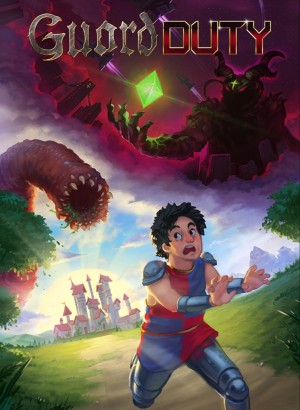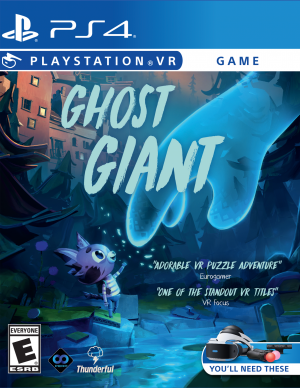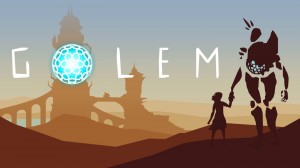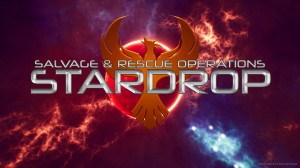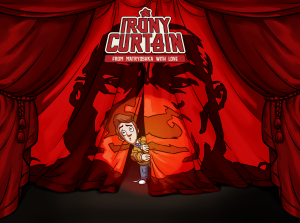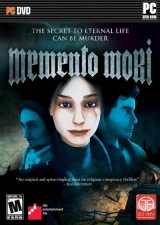Review for Golden Treasure: The Great Green

I’ll be honest: I’m not super into dragons. I love fantasy storytelling but dragons never caught my fancy – from Smaug to Drogon to Paarthurnax, these creatures that seem to light up people’s faces with awe never quite grabbed my attention. (Actually, that isn’t quite true, as I love non-traditional takes on dragons like that of the Panzer Dragoon series). Nothing wrong with them, don’t get me wrong, but dragons always felt to me like they belonged airbrushed on the side of vans or on Ren Faire merchandise rather than something to take seriously.
So I went into Dreaming Door Studios’ freshman effort Golden Treasure: The Great Green with a little bit of trepidation, not because it looked bad – far from it – but because it took dragons and moved them from the sidelines (the villains, the sidekicks, the pets) to smack dab in the center. In Golden Treasure you don’t just play as a dragon, the game is a veritable dragon lifestyle simulator, a mashup of open world role-playing and survival mechanics in the skin of an illustrated text adventure or visual novel. Thankfully, it's done well enough that my initial eye rolls at the subject matter soon melted into genuine appreciation and hunger to learn more about these dragons, their history, and their ways. Despite a few hiccups (some bigger than others), it molds a compelling world and tells a complex tale of an ancient, rigid draconic society and its evolving relationship with a changing world when faced with unfamiliar forces.
The game begins in ovo, as you literally play through the fetal development of your reptilian avatar, and across four chapters you’ll guide it through infancy, childhood, adolescence, and finally, adulthood. You play as a fledgling dragon (or Drak-kin) who is thrust out into the world with little direction after its Creator is murdered by a tribe of No-Tails (prehistoric humans) who are, day after day, encroaching further on Drak-kin territory. The young dragon is given control of The Great Green, a lush expanse of rolling hills, flowing rivers, and shadowy forests. While the immediate story is up to you based on the areas you choose to explore and the avenues you opt to pursue, the greater narrative deals with the growing threat of the No-Tails and how the Drak-kin and other creatures handle their presence.
After the first chapter, the remaining three share a similar structure. You begin each in-game day at your lair and have access to a regional map full of icons. You can select one location to explore per day, each of which contains either a story event (some one-off, some repeatable) or hunting grounds. Each day your energy levels deplete slightly, so every few days you’ll have to take time to go hunting. This involves selecting a hunting ground and engaging in a turn-based minigame where you can choose to stealthily creep toward your prey and quietly observe them, or sprint at them and strike. If you alert them or if your initial strike isn’t powerful enough for a clean kill, a chase or battle will ensue.
A chapter is limited to a certain number of days (depicted as a clock running down) before a major narrative event propels you to the next area. Thus the game is a balance of managing your health and energy levels alongside gathering wealth (you are, after all, a dragon) and exploring the world around you. Exploration of a new location leads to choose-your-own-adventure-style visual novel sequences where you meet and converse with the denizens of the realm, attempt to gather loot, or encounter mysteries and puzzles that require both player cunning and their avatar’s various stats to overcome.
Your dragon has four elemental statistics: Fire, Water, Earth, and Air, and each of these govern various skills and proficiencies. Fire determines your combat ability as well as your chances of succeeding at strength-based challenges; Air allows you to outthink enemies and reveal previously hidden options; Earth determines your maximum health, plus your resilience and fortitude both physical and mental; and Water represents your dexterity, athleticism and speed. Your choices in the first chapter (the fetal period) determine your starting stats in each element, and if you die you’ll carry over some of your skill points on restarting the current chapter and be able to distribute them at will.
Much of the gameplay revolves around this interplay between your own critical thinking ability and the numerical stats of your dragon. For example, you might return to your lair one evening to find it full of bats who’ve decided to move in. With sufficient Fire, you could attack them head-on and drive them away, taking a few as a nice evening snack to replenish your energy. With enough Air you might be able to negotiate sharing the space with them, or with a higher level you can challenge them to a trial of wits for ownership of the lair. If you select the trial of wits, however, it is up to you to actually solve their riddles (by literally typing in the answers). Other scenarios rely on your own ability to navigate a cave system, solve pattern matching problems, and so on.
Most encounters have several different possible outcomes, often rewarding you with experience points, treasure, artifacts (special items with unique abilities), or furthering one of the game’s various subplots. Even failure can be rewarding, as trying but not succeeding at a task still gives you experience points in the relevant elements (after all, don’t we learn more from failure than success?). Attempt but prove unable to move massive rocks blocking precious gemstones you wish to add to your hoard and you’ll gain Fire experience anyway; get lost in the maze-like forest near the Spirit of the Great Green and you’ll still earn Air experience.
There are other factors that get layered on over time as well. Eventually you’ll be able to challenge nearby dragons for their territory, unlocking new hunting grounds and encounters. A couple of mysterious optional dungeons contain terrible danger and the promise of great rewards. You’ll be able to enter into trade relationships with some creatures. And there are a number of underlying subplots that could easily slip by those who aren’t paying attention but which reward the focused and curious player.
Like a visual novel, Golden Treasure is largely conveyed via static backgrounds and text, so it’s essential that they both be well-crafted. Here the art is consistently gorgeous, with a hand-painted look and stunning colors. Subtle animations add greatly to the effect, such as ripples in the water and energy auras that appear around animals you encounter. Combined with the ethereal orchestral score and plethora of subtle environmental sounds, the presentation draws you deeply into its natural world, one tinged with spirituality and awe.
The writing, too, is very good, and there is a lot of it. Some of the stylistic choices hit on pet peeves of mine – nearly every other word is an Epic Fantasy Capital Letter Proper Noun, for example: Clansingers, Longears, The Great Blue, Allmother, etc. Not objectively a problem, but something that wears a little thin for me personally. Even so, the script does a wonderful job of recalibrating your perception to that of a Drak-kin. How your character relates to nature as an active participant, and the way its every action is influenced by draconic societal mores is evident in nearly every line of prose. Communication is done lyrically – in literal lyrics – as animals in the Great Green express themselves via Song, a sort of abstract medium somewhere in between actual singing, base animal calls, and telepathic conversation. Each animal has its own lyrical style and is depicted with a unique font choice, making every encounter feel fresh.
Initially I was somewhat put off by the rigidity of Drak-kin culture and the way players are expected to pursue their values. Dragons are self-centered, aggressively independent, and fully assured of their own superiority. At first the game seems totally convinced of the supremacy of this race and their traditions, which sometimes spill over from self-sufficiency into arrogance, cruelty and greed. But as Golden Treasure progresses, it interrogates both Drak-kin society and a variety of philosophies and elements of human culture, exploring these topics with more tenderness and complexity than it originally seems. The game's multiple endings make it clear that the developers have no interest in easy answers and rote truisms. Throughout I was often reminded of Planescape: Torment, Black Isle’s acclaimed 1999 RPG that similarly probed the pros and cons of a wide swath of philosophies and moralities. It was no surprise, then, to see Torment directly referenced in the credits by the creative director of this project.
But the experience is not all talking and philosophizing. Sometimes you have to get your claws dirty. The game features a turn-based combat system based around a rock-paper-scissors mechanic where Water beats Fire, Fire beats Air, Air beats Water, and Earth is neutral. Each ability at your disposal has an elemental type and often a side effect (such as buffing an element or giving you two turns in a row). Once you select a move, your elemental choice goes up against the enemy’s choice. Both sides often deal damage, but that damage is amplified or mitigated based on the rock-paper-scissors determination.
It’s functional, but it’s not terribly satisfying. Occasionally it’s actively frustrating, especially in the earlier parts of the game when your stats are much lower. For one thing, the combat interface is, in a word, inelegant. In order to find out what a move (with a name like Mindscream) actually does, you have to click on an arrow to reveal a panel showing your elemental proficiencies, then click on the element in question, then scroll through a long list of abilities, then scroll through a wordy explanation of an ability’s effects. This isn’t a problem when you only have one or two abilities per element, but once you have seven or eight in each, it’s very hard to keep them all straight, leading to repeated visits to this buried list of explanations – a small tooltip or pop-out window when hovering over the ability would have been far more convenient.
It’s also very easy to die in combat, or to get sucked into a battle that you’re not prepared for. If you’re just out hunting you can flee before dying, but many story encounters prevent escaping, forcing you to fight to the death one way or another. As an older, stronger dragon this is much less of an issue, but in the early stages these encounters can be overly difficult unless you explicitly focus on combat stats from the start (that is, dumping most of your points into Fire, though Earth also contributes to your overall health).
This is annoying, but it’s compounded by the curious inclusion of a roguelike permadeath mechanic. If you die in combat, you lose a life and return to the beginning of that day. You have three lives, and if you run out then the game is just… over. There are no manual save games, only chapter checkpoints, so you have to start again from beginning of the chapter (or the entire game if you’re a masochist), carrying over some skill points and artifacts but losing most of your progress. Since each chapter plays out over a specified number of in-game days, if you are toward the end of a chapter and lose your lives, you may be looking at replaying well over an hour or two (or in my most extreme case, close to three hours) of the same material.
Roguelikes get away with this mechanic by shuffling and randomizing many elements of the experience for each run, but Golden Treasure doesn’t do this (with very limited exceptions). You can choose to explore new sections of the map, focus on different elements, or pursue other artifacts, but there’s only so much content and eventually you’ll find yourself replaying the same encounters over and over, speed-clicking through the text to choose the same dialogue options to get back to the point where you died, hoping that you’ve either made slightly better choices or will get luckier this time. It’s simply not a good fit for the rest of the game, and I really wish there was a mode that offered infinite lives, which would have saved me a mountain of frustration in a game that I otherwise greatly enjoyed. There is some thematic explanation for the presence of permadeath – Golden Treasure often goes out of its way to point out that death is a natural part of life and that it is not the end of the cycle. But a game-over screen of plants flourishing in the soil where your body lay to rest doesn’t make having to start over less frustrating.
Adventure purists might roil at the addition of survival mechanics and stats on top of what is otherwise an open world game of exploration, narrative and puzzle-solving. And while I’m not much of a purist, I have to admit that this is not a totally successful experiment. It works at least as often as not – the character stats and combat add a systemic depth to a game that would otherwise have fairly little, not only helping imbue a sense of ownership of your unnamed dragon and its fate but also playing into the prevailing themes of survival versus compassion. But the underlying fear of having to replay large portions as punishment for not being fully prepared for a fight you can’t avoid stains much of the experience. My playthrough took somewhere between 10-12 hours, but at least a quarter of those were spent replaying early parts of chapters in which I’d died. For those who want to sink their teeth in and explore every last nook and cranny, there’s easily double the time I spent in original content, much of which I didn’t touch my first time through.
It certainly comes with caveats, but the stuff that succeeds in Golden Treasure: The Great Green is really wonderful. Dreaming Door has created a rich world full of intrigue and beauty, with a story that balances its linear and non-linear aspects in a strongly personalized yet carefully authored fantasy tale that explores its ideas with maturity and grace. I was ready to scoff at “Cliche Dragon Simulator 2019,” but instead found a hybrid adventure that will stick with me for some time, and perhaps even compel me to spend a little more time appreciating the natural world around me.
WHERE CAN I DOWNLOAD Golden Treasure: The Great Green
Golden Treasure: The Great Green is available at:
- Itch.io -50%












